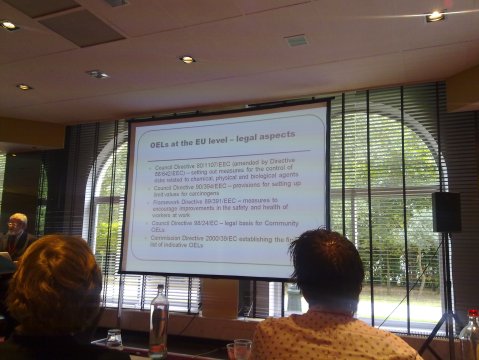
At the conference on REACH I attended a few weeks ago, as usual, all the speakers used slides crammed with information – far too much to cover in the short time slots they were allocated. In every case they either moved through the slides too quickly (so the audience didn’t have time to finish reading the individual slides) or ended up skipping and missing a number of slides.
Why do they do this?
I think that one of the reasons is that speakers at conferences usually have a limited time slot, but have a lot of information they want to communicate. By cramming information onto slides you reduce the total number and fool yourself into thinking that the amount of material you are trying to get across is manageable in the time available. It’s a little like burying your head in the sand. The problem of too much material disappears – until you try to present it!
Most presenters at conferences I’ve attended don’t seem to put thought into the design of their slides. Typically they default to using the easy option of using the standard Powerpoint template which encourages the use of bullet points and sub bullets.
Slides should support the presentation – they’re not a substitute for it. However, where they are used they need to be well designed if they are to perform their function effectively. I think that most presenters don’t put too much thought into that aspect of their presentation. They tend to default to using the standard Powerpoint template that focuses on using words, structured as bullets and sub-bullets.
Research has shown that its better to minimise the number of words on a slide and to use pictures or other visuals where possible. I don’t intend to go into it here, but there is a good explanation of the theory in a recent post on Olivia’s Mitchell’s blog “Speaking about Presentation” which includes a summary of some recent work by Chris Atherton, a cognitive psychologist from the University of Central Lancashire.
Some good advice on slide design is available also available in a number of books such as Beyond Bullet Points by Cliff Atkinson, Presentation Zen by Garr Reynolds and Slideology by Nancy Duarte.


